Get PeakVisor App
Sign In
Search by GPS coordinates
- Latitude
- ° ' ''
- Longitude
- ° ' ''
- Units of Length

Yes
Cancel
Share ×

Scan the QR code and open PeakVisor on your phone
❤ Wishlist ×
Choose
Delete
The Alpine Lakes Wilderness, which encompasses over 400,000 acres, spans the Central Cascades of Washington and sits partially in both Wenatchee National Forest and Snoqualmie National Forest.
This region contains some of the most rugged terrain in the Cascade Range including high, craggy summits like Mount Stuart, Argonaut Peak, Colchuck Peak, and Prusik Peak. Tree-covered, glacial valleys are often accompanied by rocky ridges and jagged peaks that sit along the crest of the Cascades. The Alpine Lakes Wilderness also earns its name by protecting more than 700 incredible alpine lakes, like Colchuck Lake, Marmot Lake, and Lake Stuart.
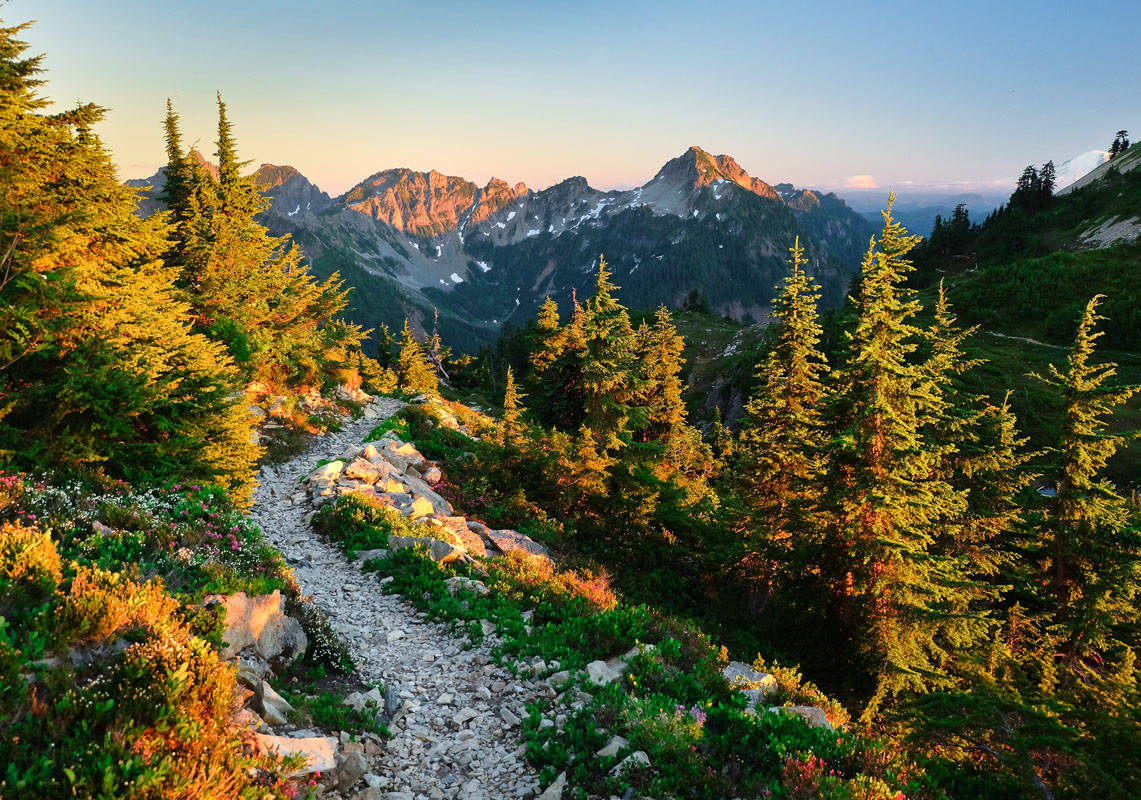
The Alpine Lakes Wilderness is notoriously diverse and is characterized by drastic changes in elevation. These dramatic elevation changes, which vary from 1,000 feet to over 9,000 feet, often result in harsh climate and weather differences throughout the region. It’s also not uncommon for some Alpine Lakes peaks to remain permanently enveloped in snow.
Needless to say, the varying and challenging terrain, coupled with stunning alpine landscapes, make this area of Washington incredibly popular for hiking, camping, backpacking, rock climbing and general outdoor recreation. The Alpine Lakes region can be accessed via 47 trailheads and contains over 600 miles of trails. The most notable long-distance trail, the Pacific Crest National Scenic Trail, traverses the Alpine Lakes Wilderness for 67 miles.
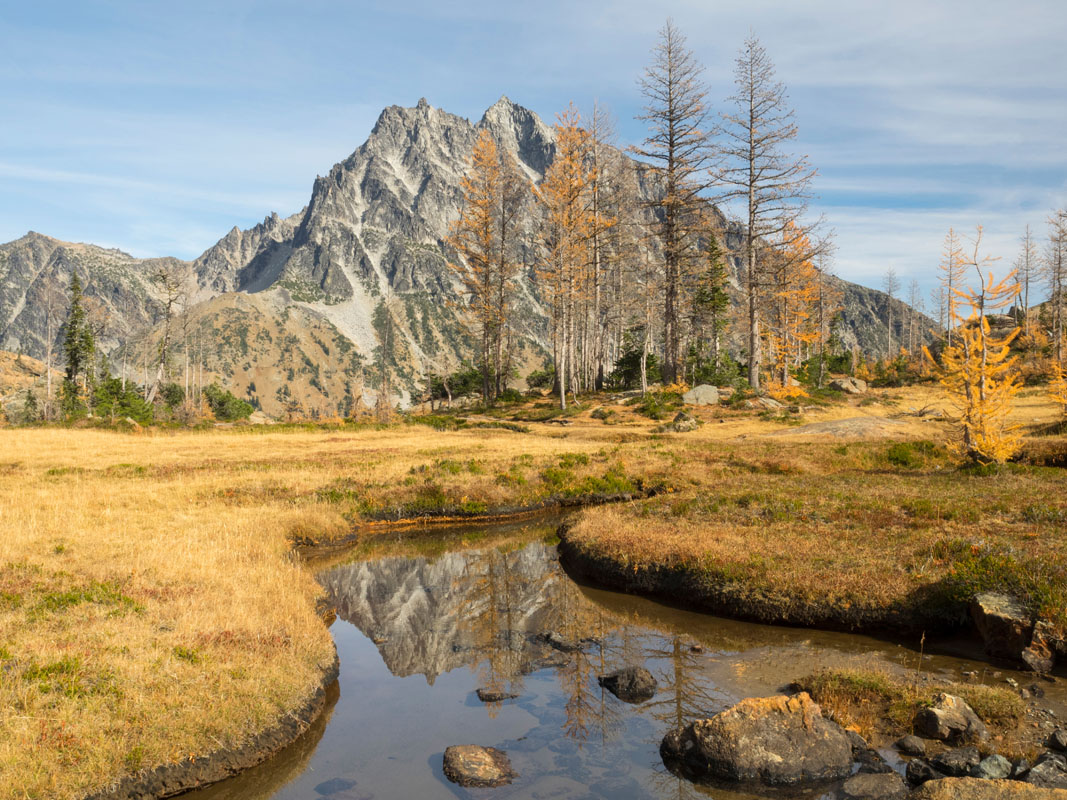
The Alpine Lakes Wilderness contains a variety of flora and fauna. Some areas of the wilderness receive 180 inches of rain each year, creating the ideal environment for Douglas Fir, western hemlock, and western red cedar. In fact, some of the largest (in diameter) Douglas fir and western elm trees in Washington can be found here. In areas that receive less rain, ponderosa pine, Engelmann spruce, grasslands, and famed alpine larch thrive. Throughout the wilderness, visitors can expect to encounter large mammals like black bear, elk, white-tailed deer, cougars, and mule deer. Grizzly bears and wolves have also been recently introduced to this region, though populations are scarce and sightings are very uncommon.
This region, which is managed jointly by Okanogan-Wenatchee and Mt. Baker-Snoqualmie National Forest administrators, contains four Ranger Districts – Wenatchee (Leavenworth), Cle Elum, Snoqualmie, and Skykomish.
Mount Defiance is one of the highest peaks that can be hiked along the I-90 corridor in the Alpine Lakes Wilderness. Due to its prominence, local hikers will generally attempt Mount Si and Mailbox Peak, which sit nearby in the Mount Baker-Snoqualmie National Forest, before attempting to summit Mount Defiance. The most popular route to the top of Mount Defiance is via the Ira Spring Trail. This trail first makes its way to Mason Lake, wandering under tall alder and fir trees and climbing up long, arduous switchbacks to the ridge. After passing the lake, the trail continues to meander, more gently, through the forest before skirting a ridge and passing several rock fields and meadows. This 11-mile natural stairmaster isn’t for the faint of heart, but those willing to endure the elevation will be rewarded with panoramic views of Washington icons like Mount Baker, Glacier Peak, Mount Rainier, and Mount Adams, as well as Bandera Mountain, Granite Mountain, and Dirty Harry.
At nearly 1000-feet of elevation per mile, Granite Mountain is another strenuous, yet rewarding trek along I90 in the Alpine Lakes Wilderness. The trail begins at the Pratt Lake trailhead and modestly makes its way through the pleasant, mossy forest before reaching the junction for Granite Mountain. After the junction, the trail begins to narrow and make its way sharply uphill. Along the pathway, hikers will pass several avalanche chutes, seasonal streams, and high meadows packed with wildflowers and berries. Once at the summit, a small lookout can be found perched on the edge of the mountainside amidst scattered granite boulders. This lookout is staffed by volunteers and is open to the public. Granite Mountain offers incredible views of Kaleetan Peak, Mount Stuart, Crystal Lake, and Mount Rainier.
Arguably the most popular long-distance trail in the region, the Enchantments is an alpine paradise of granite-worn glaciers, craggy summits, vibrant larches, and crystalline alpine lakes. There are several ways to experience the Enchantments, but none of them will be easy. First, hopeful overnight hikers will need to enter into a lottery to obtain overnight permits. Permits are awarded by the Forest Service and are very limited. Unless, of course, you’re a very experienced hiker, in which case you can attempt to hike through in a single day. The trail reaches Colchuck Lake, which sits beneath Colchuck Glacier, before climbing steeply over Aasgard Pass which rises 1,900-feet in less than a mile. For their efforts, hikers will be rewarded with views of Dragontail Peak, Colchuck Peak, Glacier Peak, and Mount Baker, amongst other alpine summits. If you’re fortunate enough to get your hands on a permit, at a minimum, you can expect to trek seven miles and climb 4,400 feet of elevation to reach the Upper Enchantments.
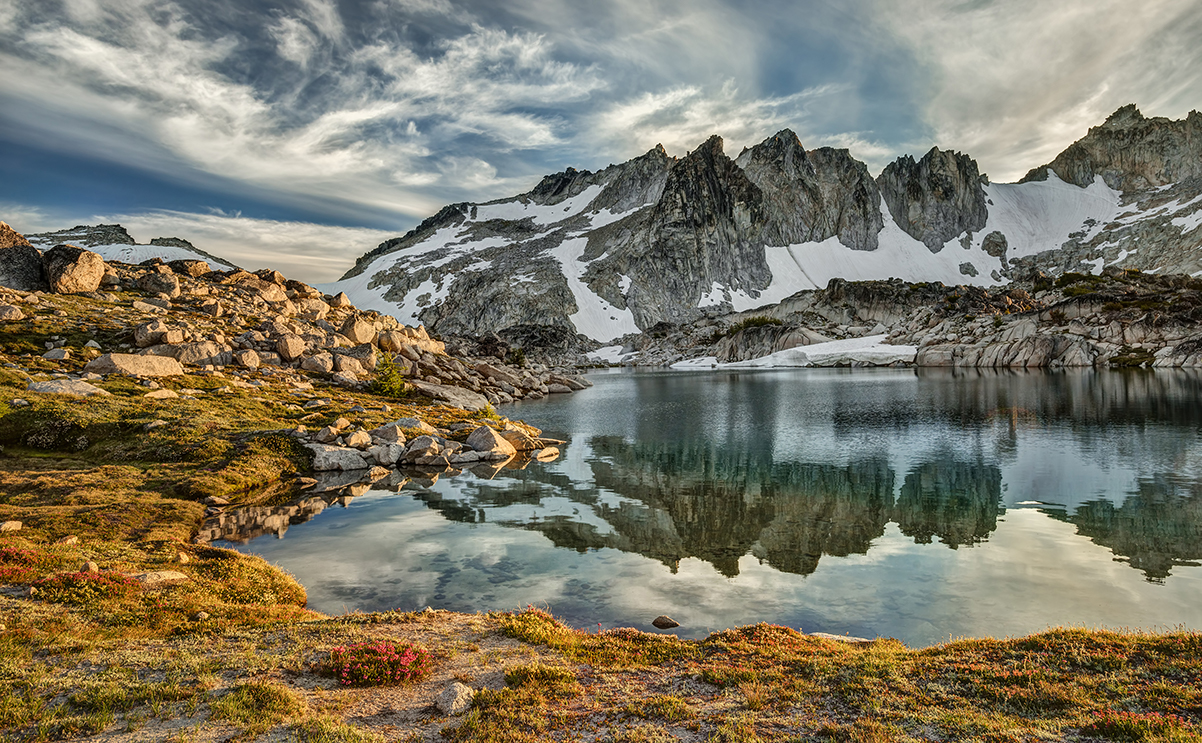
Leavenworth, a quirky, Bavarian-style mountain town, sit just outside of the Alpine Lakes Wilderness in the Cascade Mountains. During the winter, winter recreation enthusiasts travel to Leavenworth to drink German beer and grab a bite to eat on Front Street after spending the day at the Leavenworth Ski Hill, Mission Ridge Ski & Board Resort, or Stevens Pass. In the summer, hikers hang out in Leavenworth to take advantage of easy access to popular hiking or biking trails. Leavenworth also offers a variety of dining options, accommodations, and hosts several interesting festivals and museums.
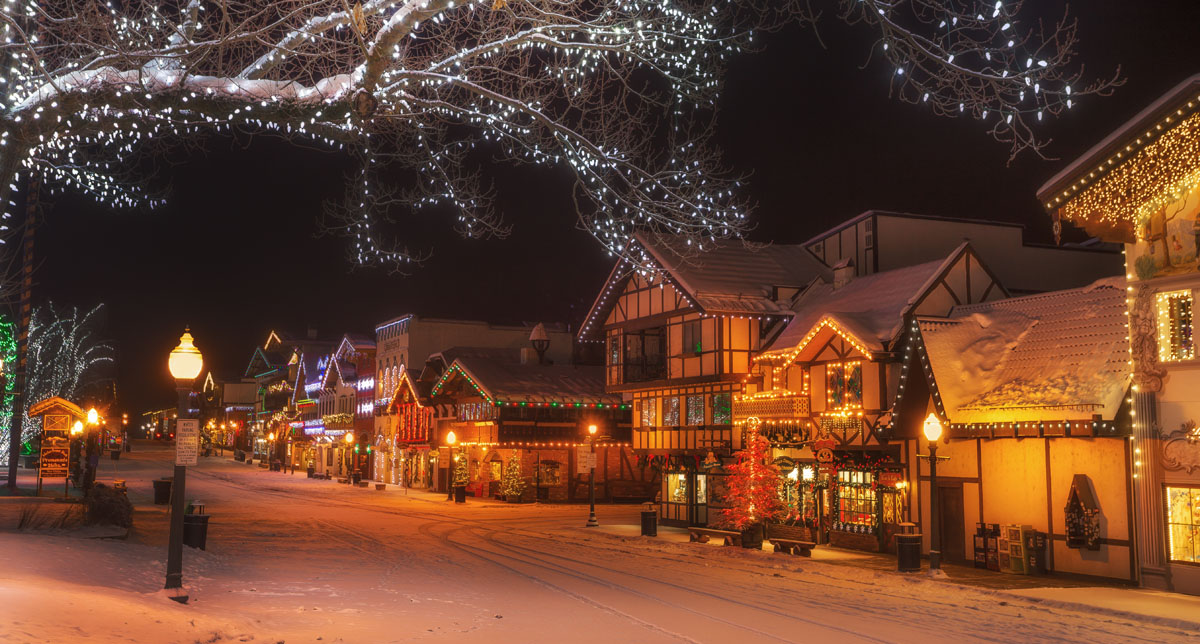
The Summit at Snoqualmie contains four unique ski areas that span both sides of Snoqualmie Pass – Alpental, Summit West, Summit Central, and Summit East. The resort’s location, directly off of I-90 and just an hour from Seattle city center, make it incredibly accessible and popular amongst Washington locals. The Summit offers over 2,500 miles of trails suitable for hiking, horseback riding, and biking, as well as over 2,000 skiable acres and 25 lifts.
Summit West is the most well-known, while Alpental offers some of the steepest runs in the state. Summit East is known for its cross-country skiing and groomed trails and Central Summit houses a huge, popular terrain park. There are also a variety of restaurants and accommodations scattered throughout this region, making this the perfect basecamp for outdoor enthusiasts.
North Bend is a charming mountain town that was once made famous by David Lynch’s television series Twin Peaks. The city sits just outside of the Alpine Lakes Wilderness area and is within close proximity to several popular hiking trails and summits along I90. There are several small motels, cabins, and campgrounds available to accommodate guests in North Bend, as well as plenty of places to grab a cup of coffee or a bite to eat.
Explore Alpine Lakes Wilderness with the PeakVisor 3D Map and identify its summits.




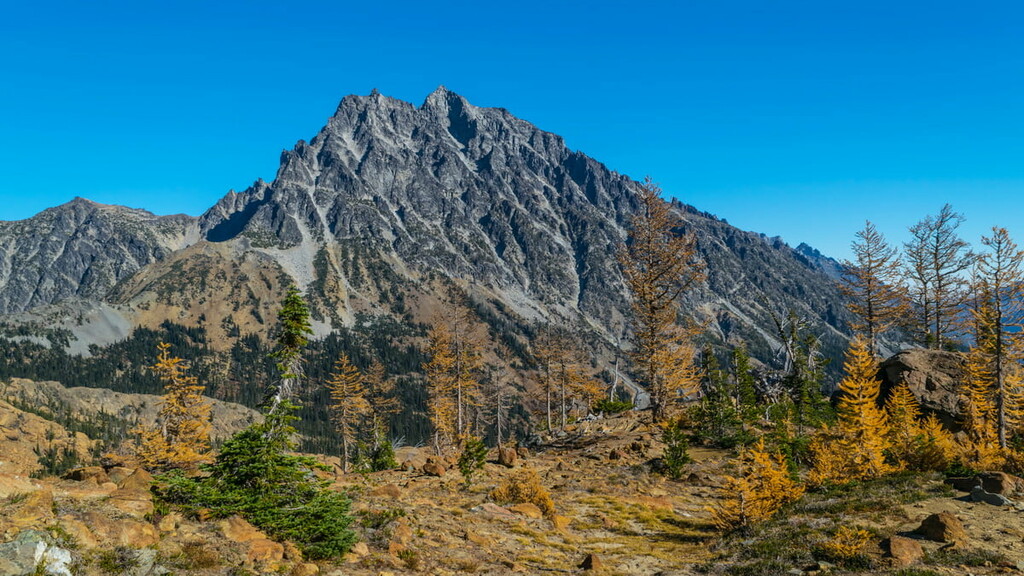
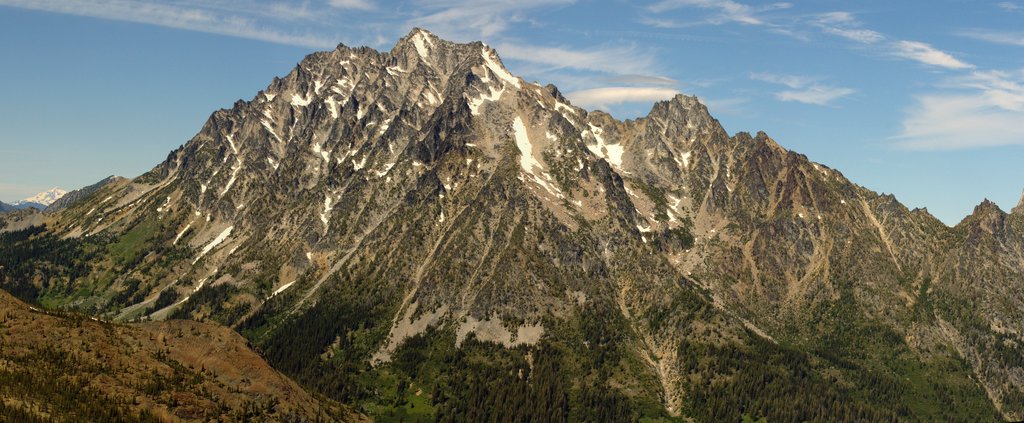
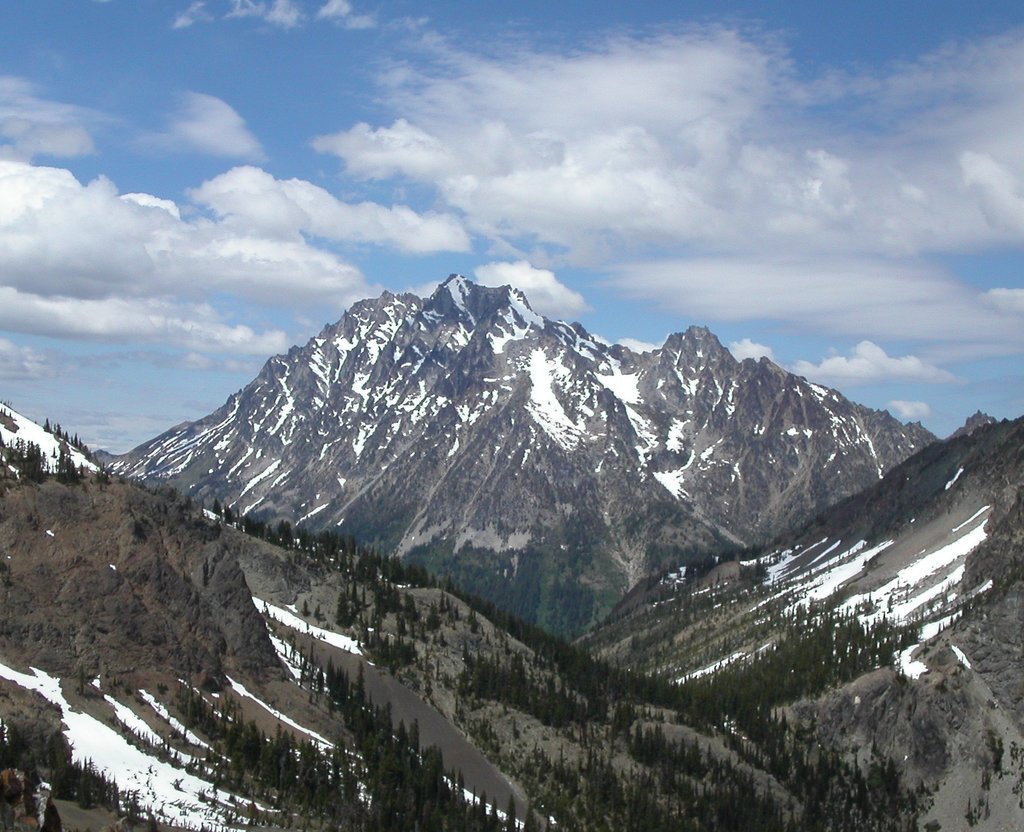
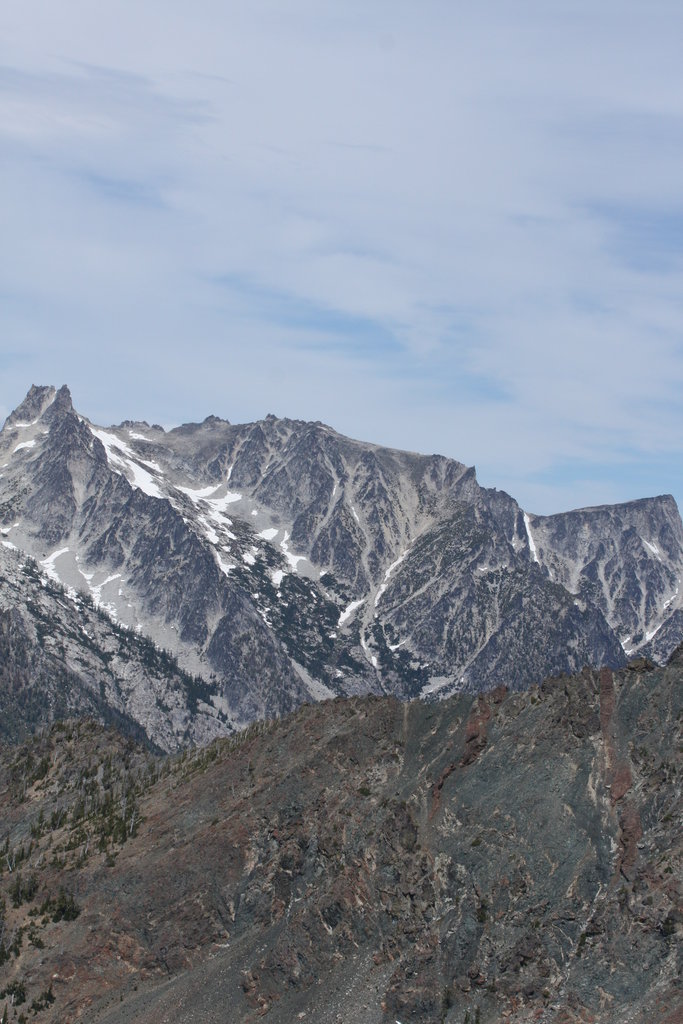
ultra
mid-state-milers
cascade-range-9000ers
washington-bulger
smoots-100
chemeketan-18-nw
mountaineers-cascade-classic
mazamas-16-nw-award
washington-ultras
mid-state-milers
washington-bulger
smoots-100
mountaineers-cascade-classic
ultra
mid-state-milers
cascade-range-9000ers
washington-bulger
smoots-100
chemeketan-18-nw
mountaineers-cascade-classic
mazamas-16-nw-award
washington-ultras
mid-state-milers
smoots-100
mountaineers-snoqualmie-all
mountaineers-snoqualmie-first-10
